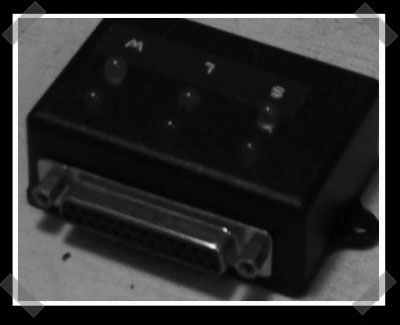
[Jose] sent me this interesting little project. JScanlogAlert is a combination of hardware and Java software designed to monitor your network for undesired traffic. (looks like fun for capture the flag competitions.) The hardware is simple – the data lines of a parallel port are used to trigger LEDs that signify the network state.
12 thoughts on “JScanlogAlert Hardware Network Monitor”
Leave a Reply to TJCancel reply
Please be kind and respectful to help make the comments section excellent. (Comment Policy)















Looks cool, but it would be nice if the page actually told you what it did (Ie, what do the lights mean) and how to use that in a practical way.
Unless it is on there and I am just missing it. I am sure it is in the actual archive, but it is 4 AM where I am right now, and it would be nice to get some up-front information.
i’m sure you use their java tool to configure what the lights mean yourself, since admin a will have different needs than admin b, and will want to keep an eye on different things. this box doesn’t do anything except light a led, the ‘meat’ of the project is the java app.
As far as I can see on the flow-chart it is self-explainable. Indeed the app will do the stuff, but the LED-functionality is in the chart pretty clear.
Would be cool if instead of Java the C language could be used. But that is just me.
– Unomi –
Ah yes, now that I look at it in the afternoon, the flowchart does describe what the lights are for.
Unfortunately, it looks rather useless after all. Blinking a red LED when a string match is found in syslog is the halfway interesting capability it has.
Still, clever concept at the least. The simple hardware could of course be adapted to any number of applications. And yes, I too would rather it use C/C++ than Java. Java is a dependency I am not willing to install just for blinking LEDs.
I dont think the hardware is the point (it’s driving data pins on a lpt port). More of the function of the software. If you’d like c code to control data lines… well try google its simple.
http://www.google.com/search?q=c%2B%2B+parallel+port&btnG=Search
The interesting part is the interpretation of the data I’d guess, which is a software monitor. This isn’t a hardware network monitor. Its a software monitor that then sends data to the printer port. If you wanted to dedicate a machine I guess you could call that your “hardware network monitor” because its a dedicated machine.
This is very similar to other “Computer controlled ____”s with different software. Athough it is a novel use, I personaly have nothing wrong with a simple shell script, cron, and sendmail (either way I have to check something on/by the computer).
Huh… It would be nicer if he distributed the source code for the java junk, then it could be used as a valid example.
Hey guys, the code is available at sourceforge.net. Also we can do the same thing using C, bash etc… But it was part of a java training to some students in a course that i gave :-) But, for now this app is running as service in my home firewall (An old pentium 100mhz with Debian and 32mb of ram)
Does anybody have a link to a decent English translation of that page?
This page http://dcon.com.br/jscanlogalert/ is all in english with detailed instructions, what did you not understand?
With all due respect, I think this article sucks!
#1 – The project is mainly about the software. The hardware is nothing more than blinking lights — something you’re better of showing on a screen anyway.
#2 – Even the code for the parallel port interface is scant. His ParallelPort class just uses an external library libparport.so, and no source is provided. Would’ve been better off using Java’s own communication’s API.
#3 – We already had a good parallel port interfacing article from quite recently, that we didn’t need another one that wasn’t upto par.
#4 – The title gave me the impression that it would be some interesting network hack like the WakeOnLan ones from a month or two back.
To monitor a scanlog in a network with a huge traffic is not an easy thing to do, even if you can dedicate an entire screen with log opened using ‘tail’ command, so to put a blinking light informing you about the status is a quite simple and useful thing that can save your human intelligence (and time) to look by patterns inside a log file.
Also you can check your lan and wan connectivity just looking at leds, instead typing a ping command. ;-)
The intent was to be easy to do, also it could be thru an usb interface but I did want to avoid integrated circuits. So I choose the unused parallel port. :-)
senpre deboxada